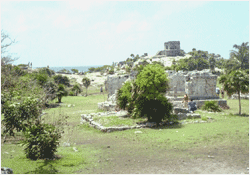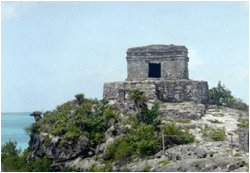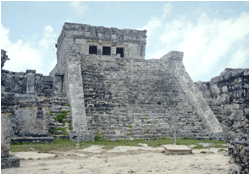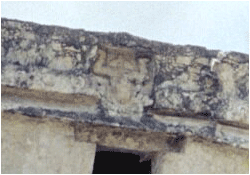

 |
Tulum was built around AD 1200; it reached the peak of its development two centuries later. It is one of the last Maya outposts of the late Post-Classic Period. Perched above the Caribbean on the Yucatan coast, Tulum was an important port and commercial center that participated in the maritime trade that extended from Central America to central Mexico. Tulum means "wall" in the Mayan language, and in fact it is surrounded by defensive stone walls on three sides, with watchtowers, and walkways. A number of roads linked the urban center of Tulum with the forests of the interior. |
The Spanish came across the city during Juan de Grijalva's expedition of 1518. Grijalva reports of the fortifications and buildings painted red, white and blue, and compares the city in size and stature to Seville. The ruins are less extensive than Chichén Itzá and Uxmal.
|  |
 |
There are three major structures of interest: El Castillo (the tower which dominates the area), The Temple of the Frescoes, and The Temple of the Descending God.
|
The Temple of the Descending God
|  |